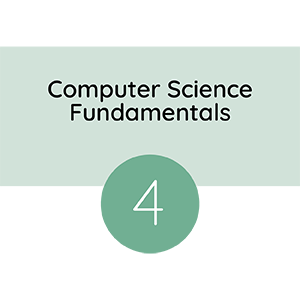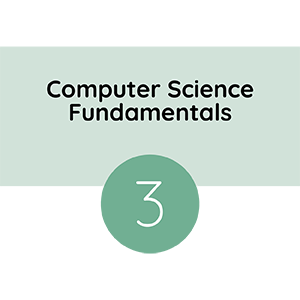Computer Science Fundamentals
5TH GRADE
This is the page for our full-year course. If you are looking for a condensed option for summer camps or short instruction blocks, explore our Computer Science Fundamentals Pilot.
Course Description
In this course, students review programming structures and experiment with new coding techniques using Scratch. During Unplugged and Coding lessons, students implement arrays and booleans in preparation for transitioning to text-based programming. In Digital Citizenship and STEM Career lessons, students discuss credible online sources, digital copyright, accessibility, and a variety of STEM careers. By the end of this course, students will be able to assess the impacts of computing on society and demonstrate advanced computational thinking and problem-solving skills.
Learning Objectives
Each lesson plan is designed to enable students to achieve specific learning outcomes related to course aligned computer science competencies. For example, at the end of this course students will be able to:
- Implement conditionals, arrays, and loops in code.
- Demonstrate knowledge of loops and arrays and predict the output of functions.
- Independently use the iterative nature of the design process to build a project meeting specified criteria.
- Summarize how boolean expressions control loops to create intended outputs.*
- Judge healthy and unhealthy online behaviors and provide alternatives to negative behaviors.
- Describe the skills and duties of a robotics technician and will summarize how emerging technologies may affect the field.
Resources Included
- Teacher training videos
- Summative assessments
- Formative assessments
- Syllabus
- Customized standards map
- Step-by-step lesson plans
- Pacing guide
- Teacher and student slide decks
- English language learner supplemental teaching guides
- Vocabulary words and definitions
- Coding lessons
- Unplugged lessons
- Digital Citizenship lessons
- STEM Career lessons
- Hardware integrations
“If I can teach this stuff, literally anyone could.”
— Amy Giba, STEM Teacher
“The kids get fired up because they can see the connections.”
— Collin Yust, 3rd Grade Teacher
Core Pillars of Ellipsis Education
Not every student loves to code, and that’s ok. That’s why the Core Pillars of Ellipsis Education are at the center of every course. Each pillar includes activities built to engage every learning style in the classroom.



